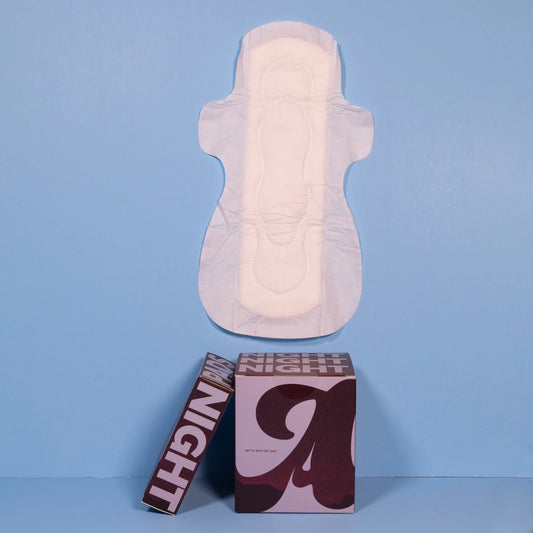Did you know that your symptoms of heavy menstrual bleeding may be due to uterine fibroids? Are you wondering what UFs are and how doctors diagnose them?
Expert insights from Dr. Anjali Malik (she/her)

We’re joined by Dr. Anjali Malik, a board-certified, fellowship-trained radiologist to introduce you to uterine fibroids and answer some of your questions.
Dr. Malik is based in Washington, DC. She’s an active advocate for health access, health education and transparency, with her patients, on her social media platforms (Instagram, Twitter & TikTok) as well as with our elected officials on Capitol Hill. As a member of the August Medical Board, she helps people with uteruses better understand their bodies so that they can live their best lives.
What are Uterine Fibroids?

Fibroids are benign muscle masses of the uterus. Though they are benign, they can potentially cause a variety of symptoms or none at all.
Symptoms include:
- Heaviness
- Pelvic pain
- Excessive menstrual bleeding
- Urinary symptoms (like frequency) and constipation
- Problems with fertility & conceiving
How do you diagnose fibroids?

In my practice, I frequently diagnose my patients with fibroids through ultrasound, an imaging technique that utilizes sound waves to view inside the body. You may be familiar with ultrasound used during pregnancy – detecting fibroids uses the same type of ultrasound!
In addition to the transducer (the wand through which sound waves are sent and images acquired) being on the abdomen, there is also one that is inserted within the vagina, called a transvaginal ultrasound. The transvaginal ultrasound offers a clearer view of the uterus and ovaries, allowing us to more accurately diagnose our patients. A doctor might order an ultrasound to specifically evaluate for fibroids, while some are found incidentally.
What are you looking for during the ultrasound?

When we do an ultrasound of the uterus, we look at…
- the endometrial lining (aka the lining of the uterus that sheds during the menstrual cycle)
- the uterine muscle, called the myometrium
- the ovaries
- and at the fallopian tubes.
We can see fibroids anywhere in the uterus, with different locations having different implications.
What are the different types of fibroids you can find?
-
Intramural fibroids are seen within the uterine smooth muscle: These are generally asymptomatic unless they are very large and adding to uterine bulk, at which point they might cause heaviness or pelvic pain, urinary symptoms by pressing on the bladder or ureters, or constipation by compressing the bowel.
-
Subserosal fibroids are at the outer rim of the uterine smooth muscle, and are also only symptomatic if they are large.
-
Pedunculated fibroids grow off the outer uterine wall and can sometimes look like “Mickey Mouse ears.” These are more likely to cause compression of adjacent structures and add to the uterine bulk.
-
Submucosal fibroids grow at the innermost layer of the uterine muscle and can protrude into the uterine cavity, which can cause abnormal bleeding and interfere with fertility.
-
Intracavitary fibroids are entirely within the endometrial cavity and cause abnormal bleeding, as well as potentially affect fertility.
What are treatment options for fibroids?

Treatment options include:
- Removing the fibroids
- Removing the uterus
- Or, utilizing imaging & radiology to remove the blood supply to the individual fibroids (called Uterine Artery Embolization or Uterine Fibroid Embolization)
What is Uterine Artery Embolization?
UAE is a minimally invasive treatment option that uses imagery and avoids surgery.
In this, a small catheter is inserted through an artery in the leg or the wrist. This catheter is then advanced to the vessels that supply the fibroid(s). Through this, small particles are used to embolize, or block and clot, the blood vessels that feed the symptomatic fibroids. Though this procedure is not without risk, it does avoid surgery.
It is best for those patients who no longer plan to conceive and no longer desire fertility, as it can inadvertently block the blood flow to the ovaries and/or uterus. This can only be performed on fibroids with robust blood supply. The downtime following the procedure is minimal, and many find their symptoms resolved following treatment.
What should I do if I think I have uterine fibroids?

Talk to your doctor if you are having any symptoms that might be related to fibroids, if you are trying to conceive and have a history of fibroids, or if you are having difficulty getting pregnant and think fibroids could be related.
An ultrasound can offer you the information or peace of mind that you need! If your ultrasound does show fibroids, the ultrasound technologist, radiologist, or your physician can review your ultrasound images with you, discussing the locations, possible symptoms, and any treatment that might be needed.
Not all fibroids require treatment – some can be monitored by a doctor with ultrasound depending on your symptoms, the fibroid size, and your age.
If treatment is necessary, you can discuss with your doctor whether UAE (Uterine artery embolization is an option for you.
Above all, remember that your radiologists are here to help you live your best and healthiest life!
For more information on uterine fibroids, READ THIS.
August makes period care for heavy flow!

SHOP NOW – customize your box with period products suited for you & your flow.
August offers various sizes of organic cotton pads, tampons and liners.
































